-
- STELLA
- The Latin/Italian for star and occasionally seen in place of that term – see star 1).
- STEMMED
- In heraldry see slipped.
![[stemmed example]](../images/v/vx-ch-ag090.gif)
Flag of Thalheim, Switzerland
- STEPPED
- The term used when the diagonal dividing line on a shield, banner of arms or a flag is
created by a series of step-like indentations – but see the note below (also
dancetty,
serrated 1),
stepped fly and
stepped gonfalon).
![[stepped example]](../images/v/vx-hr-kr-ds.gif)
![[stepped example]](../images/v/vx-hr)kr-ds.gif)
Flag and Arms of Donja Stubica, Croatia
Please note that this term may also be used to describe other charges as appropriate, for example a "mount stepped"
(as illustrated below), or see the "stepped pattern" on the flag of
Artsakh – see mount
(also cross of Calvary).
![[stepped example]](../images/v/vx-pt-vlpag.gif)
Flag of Argeriz, Portugal
- STEPPED FLY
- 1) (adj) A term for the type of flag, now largely (if not wholly) obsolete, whose fly is
extended by a rectangular projection (smaller in width and of varying length) centred on the
horizontal meridian of the flag (see also
engrailed fly,
fly 1),
meridian,
stepped,
schwenkel,
stepped and
tails).
- 2) See ‘stepped gonfalon below.
![[stepped flags]](../images/v/vxt-d314b.gif)
![[stepped flags]](../images/v/vxt-d314.gif)
![[stepped flags]](../images/v/vxt-d314a.gif)
A selection of 19th century US House Flags (CS)
Notes
a) This was not considered an established term and had been
introduced by the Editors as no (accurately descriptive) established alternative could then be found,
however, since that time the Italian term “gonfaloni scalinati” has been discovered and is
accordingly defined below.
b) At the time of writing it is unclear as to whether the flag having a
straight-sided but angled fly (as illustrated below) should be considered as “engrailed“
or “stepped“ – see engrailed fly.

Flag of Betxi, Spain (Jose Antonio Jimenez Ruiz)
- STEPPED GONFALON
- (adj) The term (and a direct translation of the Italian “gonfaloni scalinati”) that may
be used to describe those gonfalons whose fly forms a series of steps as in the examples given below
(see also gonfalon and stepped).

Asymmetric Right (or Dexter) Stepped; Asymmetric Left (or Sinister) Stepped; Symmetrical Outwardly Stepped; Symmetrical
Inwardly Stepped
- STICKPIN (or STICK PIN) FLAG
- See lapel flag 1).
![[flag pin]](../images/v/vxt-d899b.jpg)
Stickpin flag (worldflags4u)
- STONED
- In heraldry see gemmed 1).
![[stoned]](../images/v/vx-ch-fr227.gif)
Flag of Villarsel-le-Gibloux,
Switzerland
- STORM FLAG (or ENSIGN)
- 1) Specifically, in US military usage, the smallest size of national flag flown at army
and marine corps
posts – 5 feet (1.5 m) wide by 9 feet 6 inches (2.9 m) long, or half as wide and
half as long as a marine corps post flag (see also
garrison flag
and post flag).
- 2) Generally, a smaller size of flag than that laid down for general use, and meant to
be flown in stormy weather.
- 3) See storm warning flag below.
- STORM WARNING FLAG (or PENNANT)
- In US and some other usage, one of a system of flags and pennants used to
warn mariners of severe weather in the area – a weather or weather warning
flag (see also beach flag and
maritime lifesaving flags).
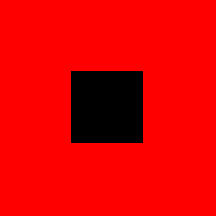
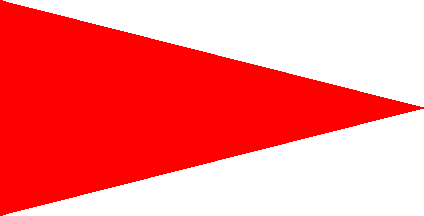
US Coast Guard Hurricane Warning Flag and
Gale Warning Pennant
- STREAMER
- 1) A long narrow ribbon attached to a flag’s staff, such as those upon which
battle honours are inscribed – see award streamer
(also banderole,
battle honour
and streamer retaining ring).
- 2) The term for a long narrow flag or pennant, now obsolete, usually (but not invariably)
showing livery colours, often fitted with a frame at the head and flown from a vessel for reasons of
bravado or as decoration – sometimes (inaccurately) called a gonfalon (see also
ancient 2), deck flags,
frame 2),
livery colours,
masthead pennant 2),
merchant pendant,
pavisade,
pennant 2)
and postures.
3) See wimpel.
![[streamers]](../images/v/vx-henrigrace.jpg)
![[streamers]](../images/v/vx-maryrose.jpg)
![[streamers]](../images/v/vx-salamander.jpg)
The Henri Grace à Dieu (Wikipedia),
The Mary Rose (Wikipedia), English Royal Navy;
The Salamander, Royal Scots Navy (Wikipedia)
Please note with regard to 2) that streamers supplied to the Henry Grace a Dieu (flagship of the
English royal fleet) in 1514 are recorded as having ranged between 15 and 51 yards (13.5 m and 46 m)
long.
- STREAMER RETAINING RING
- An often decorative, ridged band sometimes fitted to the staff of a military
colour below the finial, and from which battle streamers are suspended (see also
battle honour,
colour 2),
staff 2) and streamer 1)).
- STRIKE (or STRIKE ONE’S COLOURS/COLORS)
- (v) Nautical terms meaning to surrender – to lower or haul down
one's flag, as a sign of that surrender (see also battle ensign(s),
colours 4)
and nail one’s colours to the mast).
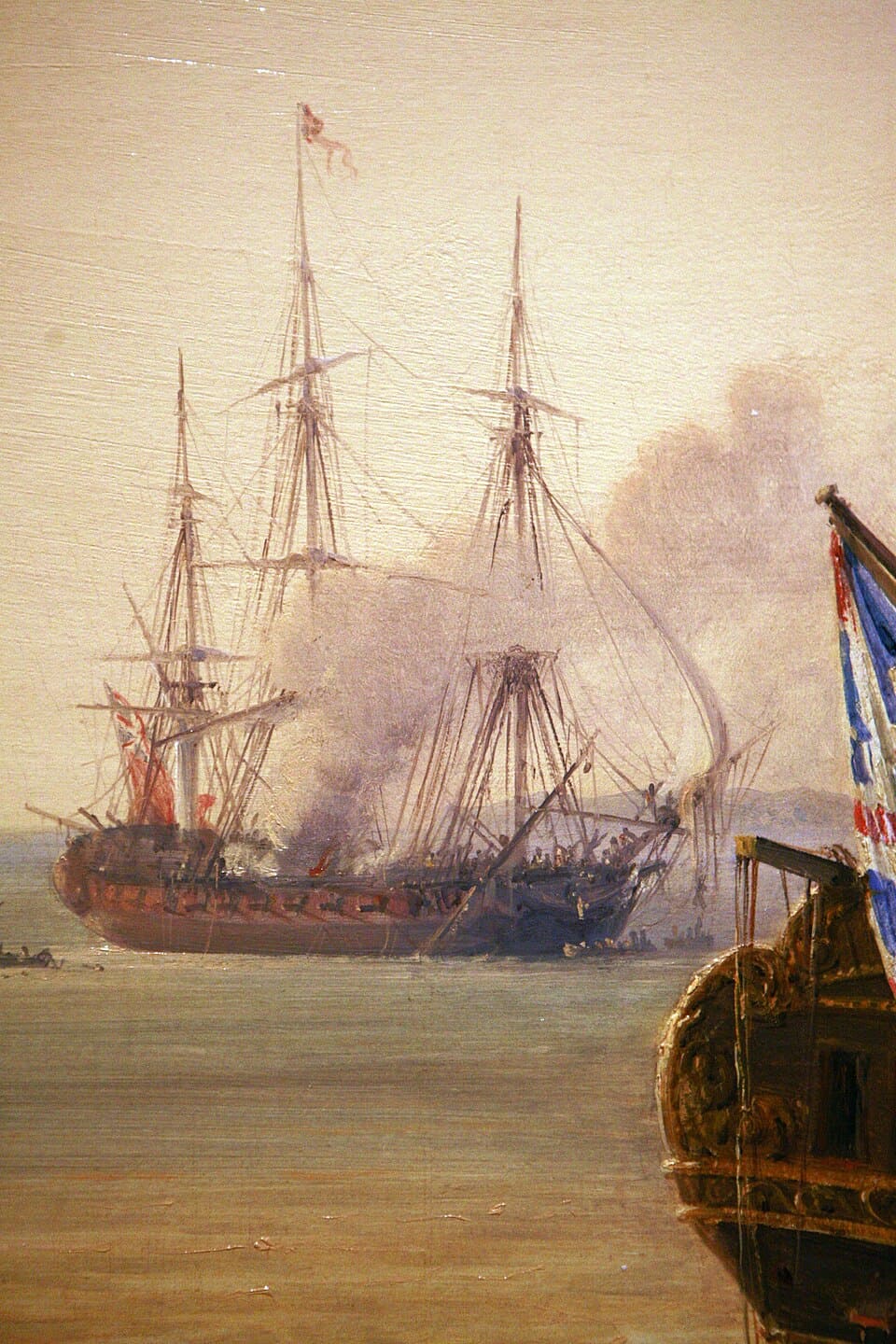
French Frigate Striking Her Colours 1778 (Wikipedia)
- STRINGED
- In heraldry a term used when the strings of a bow or of a musical instrument, the carrying strap of
a horn, or the tapes that hang below a prelate’s mitre, particularly when these are of a different
tincture – but see corded
(also bugle horn, crozier,
garnished, lappets,
mitre and tincture).
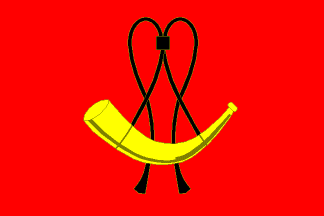
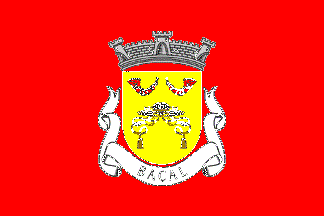
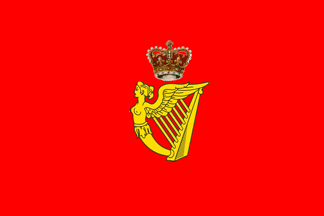
Flag of
Cornellà del Terri, Spain;
Flag of Baçal, Portugal;
Flag of Admiral of the Royal Cork Yacht Club, Ireland
- STRIPE(S)
- A band or bands of colour – whether disposed vertically, horizontally or
diagonally – which generally reach one or more edges of a flag, but which do
not cover the whole area – see striped
(also appendix IX,
bar,
bend,
converging stripes,
expanding stripe(s),
fess,
multi-stripe,
pale,
triband,
tricolour and
bicolour).
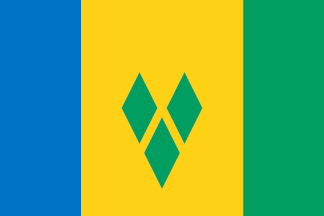
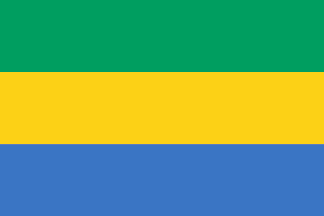
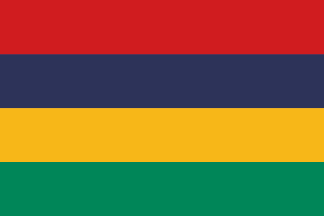
National Flag of St. Vincent; National Flag of
Gabon; National Flag of
Mauritius
- STRIPED
- The term used to describe a flag having more than two parallel bands of colour – whether
disposed vertically or horizontally – but see appendix IX,
converging stripes,
expanding stripe(s),
multi-stripe,
stripe,
triband, and
tricolour (also
bicolour).
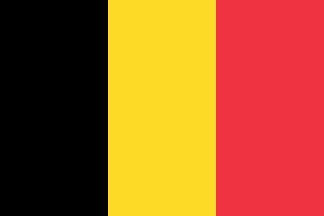
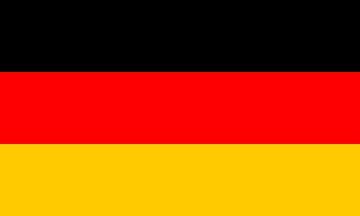
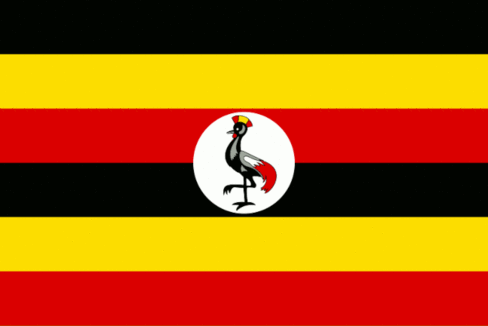
Civil Flag of Belgium; National Flag of
Germany; National Flag of
Uganda
- STUMPMAST (or STUMP MAST)
- A truncated mast (see also flying line,
and mast 1)).
Please note that a stumpmast with a fixed yard at the
truck giving it a T-shape is common right forward in the bows of those bulk cargo
carrying vessels plying the inland waterways of Europe so as to allow for passing
under bridges and other overhead obstructions. The taller of this type of mast is
also often hinged for lowering to deck level for the same purpose (see also
truck and
yard).
![[stemmed example]](../images/v/vx-ch-ag090.gif)
![[stepped example]](../images/v/vx-hr-kr-ds.gif)
![[stepped example]](../images/v/vx-hr)kr-ds.gif)
![[stepped example]](../images/v/vx-pt-vlpag.gif)
![[stepped flags]](../images/v/vxt-d314b.gif)
![[stepped flags]](../images/v/vxt-d314.gif)
![[stepped flags]](../images/v/vxt-d314a.gif)

![[stoned]](../images/v/vx-ch-fr227.gif)


![[streamers]](../images/v/vx-henrigrace.jpg)
![[streamers]](../images/v/vx-maryrose.jpg)
![[streamers]](../images/v/vx-salamander.jpg)












![[flag pin]](../images/v/vxt-d899b.jpg)